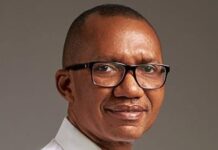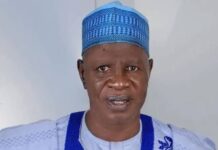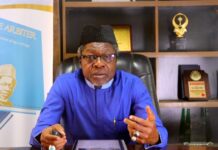BreakThrough
There was massive anxiety and fear between 16th and July 20th, 1969 when the three astronauts were flown by Apollo 11 from earth to moon. The anxiety on 20th July among estimated 650 million people across over 70 countries was beyond imagination. The NASA headquarters was a beehive of nervousness as the scientists were glued to their fuzzy computer sets watching Armstrong’s televised imagery.
One most astonishing phenomena in the Apollo mission was the effective 2-way communication between the Apollo 11 and the NASA, there was nothing like “no service” or “poor service” covering an average distance of 384,400 km between earth and moon. There was an ecstasy of relief and tremendous joy at NASA when Armstrong’s voice was heard announcing, “the Eagle has landed”. The announcement indicated a safe landing of the Apollo 11 Lunar Lander in the Sea of Tranquility at about 109 hours, 42 minutes after launch. At that moment, scientists at NASA and millions of other spectators were hugging and congratulating each other for the most amazing achievement in the history of planetary science.
As mentioned in the first part of this article, the pinnacle of event at lunar environment was the telephone conversation between President Nixon and Armstrong. That telephone conversation was so historically flabbergasting to the entire world. President Nixon described it as “the most historic phone call ever made from the White House”.
Nixon was heard saying “I’m talking to you by telephone from the Oval Room at the White House. And this certainly has to be the most historic telephone call ever made. I just can’t tell you how proud we all are of what you’ve done. For every American, this has to be the proudest day of our lives. And for people all over the world, I am sure they too join with Americans in recognizing what an immense feat this is. Because of what you have done, the heavens have become a part of man’s world….”
Similarly, Armstrong was heard replying: “Thank you, Mr. President. It’s a great honor and privilege for us to be here, representing not only the United States, but also men of peace of all nations, and with interest and curiosity, and men with a vision for the future. It’s an honor for us to be able to participate here today”.
The astronauts spent a total of three days on the moon while the Lunar Rover was driven across the satellite’s surface. Thereafter, the next challenge was mounting on the Apollo 11 and flying back to the earth surface with lunar souvenirs safely as scheduled.
Apollo 11 spacecraft was made up of three parts: the Command Module nicknamed “Columbia,” Service Module and the Lunar Module, christened “Eagle.” The Service Module contained the main spacecraft propulsion system and consumables while the Lunar Module was the two-person craft used by Armstrong and Aldrin to descend to the Moon’s surface on July 20. The Command Module is the only portion of the spacecraft that returned to Earth. While the duo of Armstrong and Aldrin were on the moon surface with Eagle, Collins flew Columbia solo around the Moon. Collins being alone flying round the moon, should have been afraid of being separated from others especially when he was out of radio contact with the Earth in the 48 minutes of each orbit as Columbia passed round the far side of the Moon.
However, his feeling was not fear or loneliness, but rather “awareness, anticipation, satisfaction, confidence, almost exultation” as he wrote in his autobiography. He added, “this venture has been structured for three men, and I consider my third to be as necessary as either of the other two”. Those were words of the brave personality, Collins.
On commencing the return trip, Armstrong and Aldrin had to join Colombia by bravely using Eagle’s ascent stage to lift off from the lunar surface and rejoin Collins in the command module. They jettisoned Eagle before they performed the maneuvers that propelled Columbia out of the last of its 30 lunar orbits onto a trajectory back to Earth.
The rendezvous time for the occupants of Eagle to join Columbia was 21.24 GMT and 11 minutes after, the two were docked before Eagle’s ascent stage was jettisoned into lunar orbit. It was an amazing and unbelievable scenario performed by the trio.
Just before the Apollo 12 flight, it was noted that Eagle was still likely to be orbiting the Moon. Later NASA reports mentioned that Eagle’s orbit had decayed, resulting in it impacting in an “uncertain location” on the lunar surface.
On July 23, the last night before splashdown, the three astronauts made a televised broadcast that was historic and monumental in the history of space expedition. Collins was quoted: “…The Saturn V rocket which put us in orbit is an incredibly complicated piece of machinery, every piece of which worked flawlessly … We have always had confidence that this equipment will work properly. All this is possible only through the blood, sweat, and tears of a number of people … All you see is the three of us, but beneath the surface are thousands and thousands of others, and to all of those, I would like to say, ‘Thank you very much.’”
While Aldrin said: “This has been far more than three men on a mission to the Moon; more, still, than the efforts of a government and industry team; more, even, than the efforts of one nation. We feel that this stands as a symbol of the insatiable curiosity of all mankind to explore the unknown … Personally, in reflecting on the events of the past several days, a verse from Psalms comes to mind. ‘When I consider the heavens, the work of Thy fingers, the Moon and the stars, which Thou hast ordained; what is man that Thou art mindful of him?’”
Armstrong concluded: “The responsibility for this flight lies first with history and with the giants of science who have preceded this effort; next with the American people, who have, through their will, indicated their desire; next with four administrations and their Congresses, for implementing that will; and then, with the agency and industry teams that built our spacecraft, the Saturn, the Columbia, the Eagle, and the little EMU, the spacesuit and backpack that was our small spacecraft out on the lunar surface. We would like to give special thanks to all those Americans who built the spacecraft; who did the construction, design, the tests, and put their hearts and all their abilities into those craft. To those people tonight, we give a special thank you, and to all the other people that are listening and watching tonight, God bless you. Good night from Apollo 11.”
The three prodigious astronauts who made America great returned to Earth and splashed down in the Pacific Ocean on July 24 after more than eight days in space. The touchdown of Columbia was at 17:53 GMT, the helicopter was lowered by the elevator into the hangar bay, where the astronauts walked into the Mobile Quarantine Facility (MQF), where they spent 21 days of quarantine to ensure that they did not bring deadly diseases or pests from the Lunar environment. This practice was continued for two more Apollo missions before the Moon was proven to be barren of life, and the quarantine process stopped. President Nixon welcomed the astronauts back to Earth and told them that “As a result of what you’ve done, the world has never been closer together before.”
After the successful outing of the Apollo 11, Apollo 12 followed immediately. America sent another manned spacecraft to the moon. Apollo 12 was the sixth manned flight in the United States Apollo program and the second to land on the Moon. It was launched on November 14, 1969 from the Kennedy Space Center, Florida, four months after Apollo 11.
Between 1969 and 1972 six Apollo missions brought back 382 kilograms of lunar rocks, core samples, pebbles, sand and dust from the lunar surface. The six space flights returned 2,200 separate samples from six different exploration sites on the Moon. After these successful Apollo missions, another manned mission in the 1980s called Challenger was a mortal disaster that shocked the world beyond belief. What happened and what are the advances in space technological breakthroughs?
Professor Othman is the Executive Director of National Agricultural Extension and Research Liaison Services (NAERLS), ABU Zaria.
Follow the Neptune Prime channel on WhatsApp:
Do you have breaking news, interview request, opinion, suggestion, or want your event covered? Email us at neptuneprime2233@gmail.com




